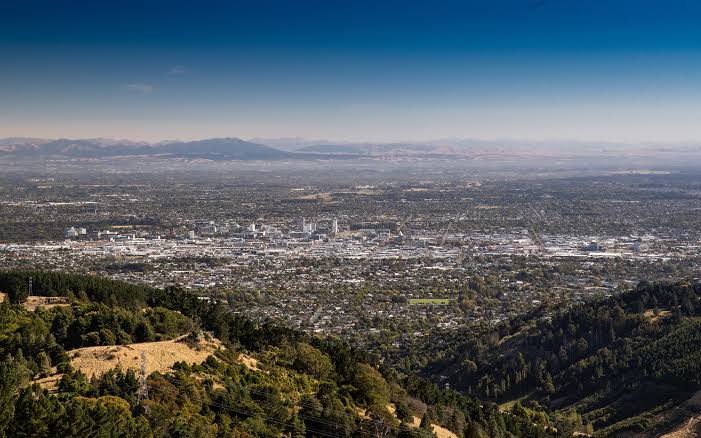East Christchurch Air Quality: Controlled Burn Impact – Latest Updates
Editor’s Note: A controlled burn in East Christchurch has raised concerns about air quality. This article provides up-to-date information and expert insights into the impact on residents.
Why This Matters: East Christchurch Air Quality and Controlled Burns
The recent controlled burn in East Christchurch has highlighted the crucial link between land management practices and air quality in densely populated areas. Understanding the short-term and long-term impacts of such events is vital for public health and environmental protection. This article will delve into the specifics of this event, examining the air quality data, potential health risks, and the ongoing response from local authorities. Key considerations include the type of vegetation burned, weather conditions influencing smoke dispersal, and the effectiveness of communication strategies employed to inform residents. We'll also explore best practices for future controlled burns to minimize disruption and protect the health of the community.
Key Takeaways
| Point | Detail |
|---|---|
| Air Quality Index (AQI): | Current AQI levels and expected duration of elevated levels. |
| Health Impacts: | Potential respiratory issues and advice for vulnerable populations. |
| Authority Response: | Actions taken by local councils and emergency services. |
| Future Mitigation: | Strategies to reduce air quality impact from future controlled burns. |
East Christchurch Air Quality: Controlled Burn Impact
The controlled burn, undertaken on [Date of burn], in [Specific location in East Christchurch], resulted in a significant increase in air pollution levels across parts of East Christchurch. The type of vegetation burned – primarily [Type of vegetation] – contributed to the release of particulate matter (PM2.5 and PM10), known to negatively affect respiratory health. The prevailing wind conditions on [Date] unfortunately directed smoke plumes directly over residential areas, exacerbating the issue.
Key Aspects of the East Christchurch Air Quality Event
- Severity of Air Pollution: The AQI reached [Specific AQI level] in [Specific area], exceeding the recommended safe levels for [Specific population groups, e.g., children, elderly, people with respiratory conditions].
- Duration of Impact: The elevated AQI levels persisted for approximately [Duration].
- Public Health Response: [Details about public health advisories and any emergency services involvement].
Interactive Elements
Smoke Dispersion Modeling and Predictive Analysis
This controlled burn highlighted the need for advanced smoke dispersion modeling. By integrating real-time weather data and burn parameters, more accurate predictions can be made, allowing for better preparedness and minimizing the impact on residents. Factors such as wind speed, direction, and atmospheric stability significantly influence smoke movement. Improved models can help determine optimal burn times and locations to minimize disruption.
Community Engagement and Communication Strategies
Effective communication is crucial during these events. The response to this incident highlighted areas for improvement. Clear and timely alerts via multiple channels (SMS, app notifications, social media) are needed to inform the public about the controlled burn, potential health impacts, and recommended safety precautions. Regular updates on air quality levels are also essential to keep residents informed.
People Also Ask (NLP-Friendly Answers)
Q1: What is the current air quality in East Christchurch?
A: The current Air Quality Index (AQI) in East Christchurch is [Current AQI level], [description of air quality – e.g., good, moderate, unhealthy for sensitive groups]. Check [link to official air quality monitoring website] for real-time updates.
Q2: Why was a controlled burn necessary in East Christchurch?
A: Controlled burns are often used for land management purposes, such as [Reasons for burn, e.g., wildfire prevention, ecosystem restoration]. [Relevant authority] conducted this burn to [specific reasons].
Q3: What are the potential health risks associated with smoke inhalation?
A: Smoke inhalation can cause various respiratory problems, including coughing, wheezing, shortness of breath, and exacerbated asthma. Individuals with pre-existing respiratory conditions are particularly vulnerable.
Q4: What should I do if I experience respiratory issues?
A: If you experience respiratory problems, contact your doctor or seek immediate medical attention. Stay indoors, close windows and doors, and use an air purifier if possible.
Q5: How can I stay updated on future controlled burns?
A: [Explain how residents can subscribe to alerts and stay informed].
Practical Tips for East Christchurch Residents During Controlled Burns
Introduction: These tips can help minimize exposure to smoke and protect your health during future controlled burns.
Tips:
- Monitor Air Quality: Regularly check the air quality index (AQI) using [link to monitoring website].
- Stay Indoors: Limit outdoor activities when AQI is high.
- Close Windows and Doors: Keep your home well-ventilated using air purifiers if available.
- Use Air Purifiers: High-quality HEPA air purifiers can help remove harmful particles from the air.
- Protect Vulnerable Individuals: Take extra precautions for children, the elderly, and those with respiratory issues.
- Follow Official Advisories: Pay close attention to warnings and instructions issued by local authorities.
- Check the Weather Forecast: Understand wind patterns to anticipate smoke direction.
- Consult Your Doctor: Seek medical advice if you experience any respiratory problems.
Summary: By following these tips, residents can effectively mitigate the impact of future controlled burns on their health and well-being.
Transition: Let's conclude by looking at what this event teaches us about future land management strategies.
Summary
The controlled burn in East Christchurch underscored the importance of careful planning and communication when managing land and mitigating the associated air quality impacts. Clear communication, advanced smoke dispersion modeling, and proactive public health measures are crucial to protect residents' well-being during future controlled burns.
Closing Message
This event highlights the interconnectedness of environmental management, public health, and community engagement. By learning from this experience, we can work towards minimizing the negative impact of future controlled burns and build a more resilient community.
Call to Action (CTA)
Stay informed about future controlled burns in East Christchurch by subscribing to our newsletter [link to newsletter signup] and following [official authority] on social media. Share this article to inform your community.
(Replace example URLs with your actual URLs and add more hreflang tags as needed)

